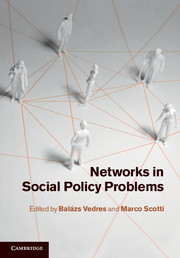Book contents
- Frontmatter
- Contents
- List of contributors
- Acknowledgements
- 1 Introduction
- Part I Information, collaboration, innovation: the creative power of networks
- 2 Dissemination of health information within social networks
- 3 Scientific teams and networks change the face of knowledge creation
- 4 Structural folds: the innovative potential of overlapping groups
- 5 Team formation and performance on nanoHub: a network selection challenge in scientific communities
- Part II Influence, capture, corruption: networks perspectives on policy institutions
- Part III Crisis, extinction, world system change: network dynamics on a large scale
- References
- Index
5 - Team formation and performance on nanoHub: a network selection challenge in scientific communities
from Part I - Information, collaboration, innovation: the creative power of networks
Published online by Cambridge University Press: 05 September 2012
- Frontmatter
- Contents
- List of contributors
- Acknowledgements
- 1 Introduction
- Part I Information, collaboration, innovation: the creative power of networks
- 2 Dissemination of health information within social networks
- 3 Scientific teams and networks change the face of knowledge creation
- 4 Structural folds: the innovative potential of overlapping groups
- 5 Team formation and performance on nanoHub: a network selection challenge in scientific communities
- Part II Influence, capture, corruption: networks perspectives on policy institutions
- Part III Crisis, extinction, world system change: network dynamics on a large scale
- References
- Index
Summary
This study proposes a rationale by which researchers can use network analysis tools to improve policies and guidelines for the formation of teams within a particular community. The study begins by defining voluntary collaborative project teams (VCPTs) as teams where members have semi-autonomous discretion over whether to join or participate. It is argued that, with reference to VCPTs, those making policies or guidelines appear to face both an information disadvantage and possess an information advantage relative to individual team members, stemming from differing positions regarding emergent qualities of teams. While team members have access to team-specific information, policy-makers can use information regarding norms within the community as a whole. It is then argued that network analysis is a useful tool for uncovering these community-wide tendencies. An example analysis is then performed using exponential random graph modeling of a network to uncover the underlying logics of team construction within nanoHub.org, an online community that fosters collaboration amongst nanoscientists. Results suggest that the technique is promising, as a normative tendency which undermines team performance is uncovered.
Introduction
As many industries migrate towards a network-based production implemented by short-term, fluid teams which are permeable, interconnected, and modular (Schilling and Steensma, 2001), the performance of teams where members relatively freely choose their collaborators is becoming increasingly important. Settings in which semi-autonomous team assembly is particularly prevalent include the development of software in the open source movement, collaboration in large online multiplayer games, scientific co-authorship, and artistic collaborations (Amaral, 2005; Guimerà et al., 2005; Uzzi and Spiro, 2005).
Information
- Type
- Chapter
- Information
- Networks in Social Policy Problems , pp. 80 - 100Publisher: Cambridge University PressPrint publication year: 2012
